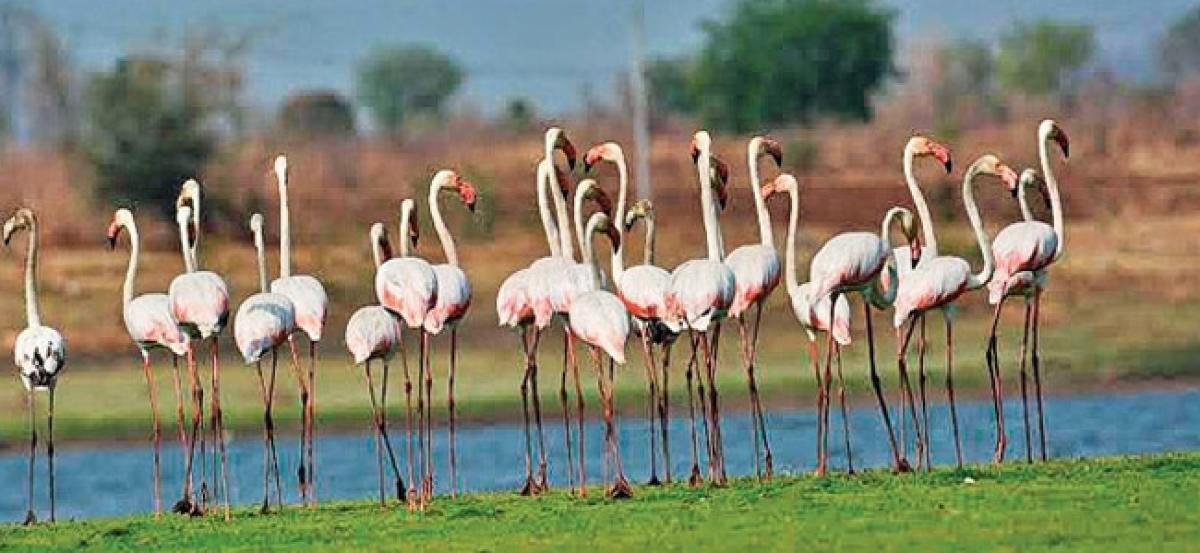Live
- Google Docs Introduces AI-Powered Clip Art Generator with Gemini
- LIC sets up stall at India Int’l Trade Fair
- Celebrating journalism and its role in society
- Supporting emotional well-being in children
- Govt plans 1 mn sq km oil exploration by 2030
- Empowering the future through quality education
- M4 MacBook Pro: Quantum Dot Display Enhances Colour and Motion Performance
- Three-tier probe on in Jhansi hospital blaze, says UP Dy CM Maurya
- ‘This is India’s century’, says PM Modi; urges all to aim for ‘Viksit Bharat’
- Crisil sees $7-trn GDP by 2031
Just In

A rare Afghan marsh that was once a royal hunting ground is set to come under the official protection of the UN environment agency, with the aim of saving hundreds of migratory bird species.
A rare Afghan marsh that was once a royal hunting ground is set to come under the official protection of the UN environment agency, with the aim of saving hundreds of migratory bird species.
On the long, arid journey to the Caucasus and Siberia, across the Hindu Kush massif, the Kol-e-Hashmat Khan wetlands outside Kabul provide sanctuary for the thousands of storks, egrets, pelicans and flamingos that head north every spring from southern India. But after 40 years of conflict and neglect, their habitat is being threatened by the growth in new homes, irrigation systems, rubbish and global warming which is gradually changing the local environment. Now the UN has designated the wetlands a conservation site, the Afghan government said on Sunday, as it also looks to help preserve the water supply of the capital.
"There are probably more than 300 or 400 species that pass through, though without an accurate count it is hard to be sure," says Andrew Scanlon, head of the United Nations Environment Programme (UNEP) in Afghanistan. They are migratory birds and "tourists" who stay for a very short period of time to find food, he adds. At daybreak, the marsh comes alive with the morning chatter of the birds hungry for breakfast. Binoculars in hand, Scanlon stands atop a tower that dominates the landscape. In the distance is the silhouette of Bala Hissar, an ancient fortress that defended the city for centuries. Opposite, mud houses and sturdier dwellings made from bricks seem to spring up at random, hurrily erected during wars for tides of refugees and displaced people.
It was once a favoured place for royals to go hunting, though Scanlon stresses any activity would have been carried out "in a sustainable way". But with the invasion of the Soviet army in 1979 and the succession of conflicts afterwards, including the civil war in the early 1990s, Afghans were preoccupied by their own survival and the environment suffered. War saw the marshes more or less abandoned until 2005, Scanlon explains. Scanlon says that land grabbing was common in the chaos of the 90s as Afghans fought for survival. The marshes became a sanctuary, providing safe haven and water.
As Afghanistan's population swelled with the return of refugees after the Taliban were toppled in 2001, he says the situation became a "tragedy of the commons". The phrase refers to an economic theory in which individuals act in their own self-interest towards a shared resource but against the common good. "Everyone is taking a piece to survive but all together this is a tragedy, it's no one's fault but everybody is guilty," he says.
Taking advantage of the chaos, factional and party leaders built houses on the water's edge. According to the UN, about 50 hectares of wild land were taken over, which the Afghan environmental protection agency, created in 2005, is now trying to recover. "Some politicians are reluctant" to act, but attitudes are changing, said Muhibullah Fazli, the agency's biodiversity expert. The most important thing, he says, is to educate local residents.

© 2024 Hyderabad Media House Limited/The Hans India. All rights reserved. Powered by hocalwire.com







